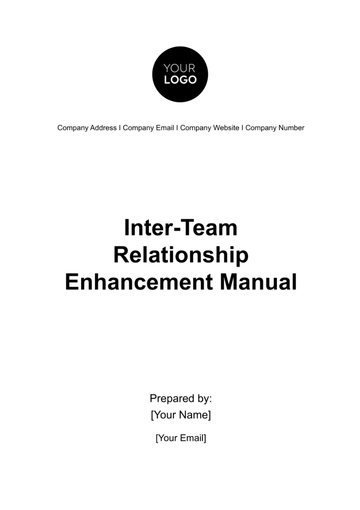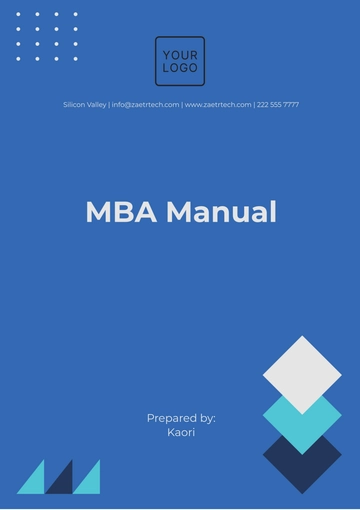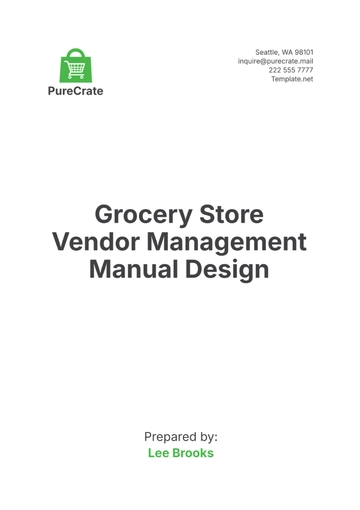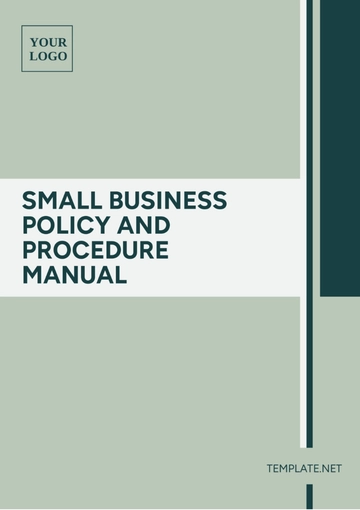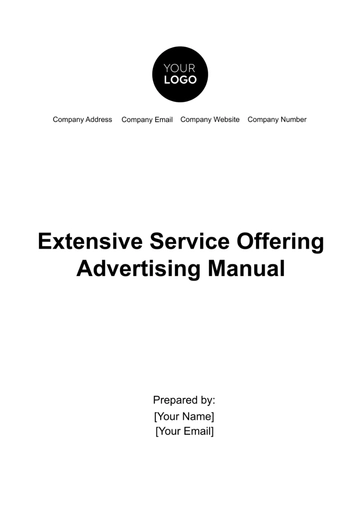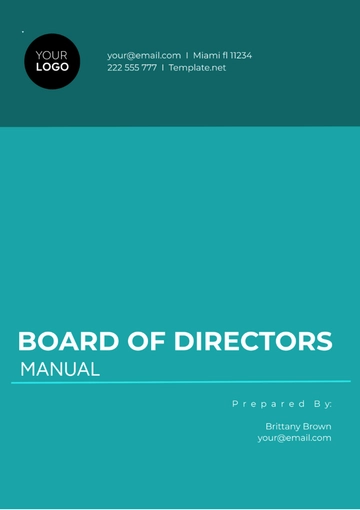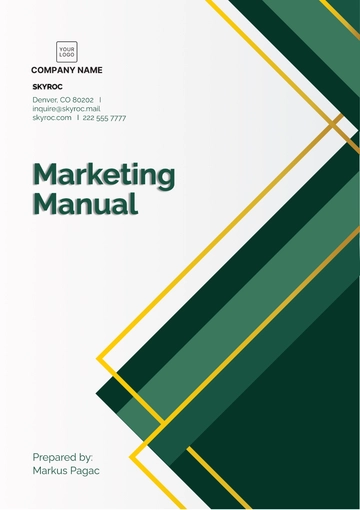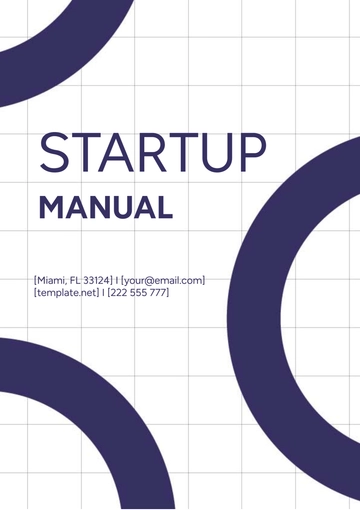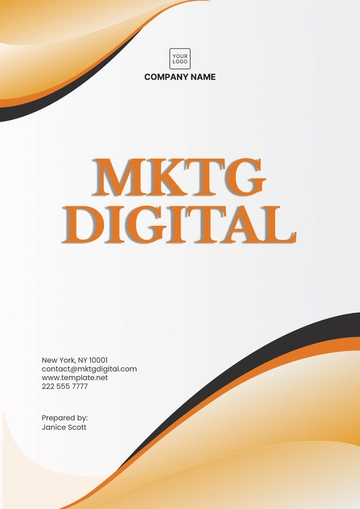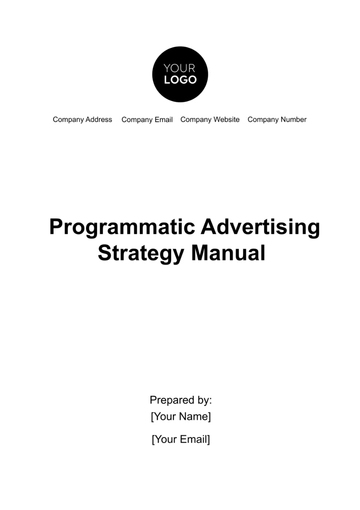Free Advertising Campaign Manual

I. Introduction
Welcome to the [Your Company Name] Advertising Campaign Manual. This document serves as a comprehensive guide for planning, executing, and analyzing advertising campaigns. Our approach is tailored to maximize reach, engagement, and ROI (Return on Investment) in alignment with the client's objectives.
II. Campaign Planning
A well-structured plan is crucial for aligning the campaign's objectives with the client's overall marketing strategy, and for effectively targeting the intended audience. The following guidelines ensure that each campaign is strategically poised to achieve its goals and deliver optimal results for our clients.
Objective Setting: The primary goal here is to establish clear, quantifiable, and achievable objectives for the campaign. These objectives should mirror the client's aspirations and be in sync with their broader marketing strategy.
Target Audience Identification: Identifying the correct target audience is crucial for the effectiveness of the campaign. This involves analyzing demographic, psychographic, and behavioral data.
Campaign Timeline Development: Establishing a comprehensive timeline is essential for managing the various components of the campaign efficiently and effectively.
Budget Estimation: Accurately estimating and allocating the budget is fundamental to managing resources and expectations.
Marketing Channel Strategy: The selection of appropriate marketing channels is key to reaching the target audience effectively.
III. Implementation Strategies
In the realm of advertising, the transition from planning to implementation is where concepts take flight. We understand that the essence of a successful campaign lies in its execution. This section outlines our approach to implementing the strategies devised during the planning phase, ensuring they are brought to life effectively and resonate with the intended audience.
A. Media Selection
Selecting the appropriate media channels is a nuanced process that requires a deep understanding of where our target audience spends their time and what kind of media resonates with them. We analyze a wide range of channels, considering factors such as reach, engagement rates, and compatibility with campaign objectives. The balance between digital and traditional media is carefully adjusted to optimize impact and efficiency. Negotiations with media outlets are conducted to secure favorable placements and rates, ensuring maximum exposure within the allocated budget.
B. Creative Development
The creative development phase is the heart of the campaign where ideas transform into tangible assets. Our team, consisting of skilled copywriters, designers, and multimedia experts, collaborates to bring the campaign's message to life. This process includes developing concepts that align with both the campaign's objectives and the brand's core values. To ensure the creative output resonates with the audience, methods such as focus groups and A/B testing are employed. This iterative process refines the creative elements based on real audience feedback, enhancing the campaign's potential for success.
C. Campaign Execution
The execution stage is about precision and coordination. A detailed plan is laid out, delineating specific actions, responsible parties, and timelines for each aspect of the campaign. Synchronization across different departments and external partners is crucial for a unified and timely launch. Throughout this process, strict quality control measures are in place to ensure that every piece of content reflects the brand's high standards and maintains consistency across various channels.
D. Performance Monitoring
Monitoring the performance of a campaign is an ongoing process that provides valuable insights into its effectiveness. By employing a range of tracking tools and metrics, each channel's performance is meticulously measured against predefined KPIs. Regular review meetings are integral to this phase, facilitating a thorough assessment of the campaign's progress and identifying opportunities for optimization. Our team remains agile, ready to make tactical adjustments in response to the collected data and evolving market trends.
E. Stakeholder Communication
Effective communication with stakeholders is pivotal throughout the campaign. Regular updates are provided to clients and team members, ensuring everyone is aligned with the campaign’s progress and any emerging challenges. These updates are designed to be concise yet comprehensive, offering a clear picture of the campaign's trajectory. We foster a culture of open feedback, encouraging collaborative problem-solving and ensuring that all voices are heard.
IV. Monitoring and Analytics
At [Your Company Name], we recognize that the true power of an advertising campaign lies in its ability to adapt and evolve based on real-time feedback and data. This section is dedicated to the continuous assessment and refinement of campaign strategies. This phase is pivotal in understanding campaign performance, making data-driven decisions, and ultimately ensuring the achievement of desired outcomes.
A. Key Performance Indicators (KPIs)
Identifying and tracking the right Key Performance Indicators is fundamental to evaluating the success of an advertising campaign. These metrics, chosen based on the campaign's specific objectives, provide a quantitative basis for measuring performance. We employ a range of KPIs, including Click-Through Rates, Conversion Rates, Engagement Rates, and Audience Growth. By analyzing these metrics, we gain insights into the effectiveness of the campaign and identify areas for improvement. This analytical approach ensures that our strategies are not just based on intuition but are backed by concrete data.
B. Data Collection and Analysis
The process of data collection and analysis is a critical component of our campaign monitoring efforts. Utilizing advanced analytics tools, we gather vast amounts of data from various sources including social media platforms, website analytics, and digital advertising metrics. This data is then meticulously analyzed to extract meaningful insights. Our analysis not only focuses on the performance of individual channels but also on how they interact and contribute to the overall campaign objectives. This holistic view allows us to understand the customer journey in its entirety and make informed decisions about future marketing strategies.
C. Real-Time Adjustments
In the dynamic world of advertising, the ability to make real-time adjustments is crucial. Our team continuously monitors campaign performance and is prepared to implement changes swiftly to optimize results. Whether it's tweaking ad copy, adjusting media spend, or shifting focus between channels, our agile approach ensures that the campaign remains relevant and effective throughout its duration. This proactive stance allows us to stay ahead of market trends and maintain a competitive edge.
D. Reporting and Communication
Clear and concise reporting is essential for transparency and for informing decision-making processes. We provide regular, detailed reports to our clients, offering insights into the campaign's performance and the impact of our efforts. These reports are designed to be easily understandable, highlighting key metrics and their implications for the campaign. Additionally, we maintain open lines of communication with our clients, ensuring that they are informed and involved in the decision-making process at every step.
V. Budget Management
Effective budget management is a cornerstone of successful advertising campaigns at [Your Company Name]. This section outlines our comprehensive approach to managing finances, ensuring that every dollar spent contributes to the campaign's objectives.
A. Budget Allocation
The initial phase of budget management involves the strategic allocation of funds across various components of the campaign. This process is guided by the campaign's objectives, target audience, and selected media channels. We allocate funds to key areas such as media buying, creative development, production costs, and analytics tools. A typical budget allocation might look like the example provided below:
Budget Category | Percentage of Total Budget |
Media Buying | 40% |
Creative Development | 30% |
Production Costs | 15% |
Analytics and Tracking | 10% |
Contingency | 5% |
B. Budget Monitoring and Adjustments
Once the budget is allocated, continuous monitoring is essential to ensure that spending remains on track. Our team regularly reviews expenditure reports, comparing actual spend against the planned budget. This monitoring enables us to identify and address any discrepancies or overruns early. In response to campaign performance data or market changes, we are prepared to make real-time adjustments to the budget, reallocating funds to maximize campaign effectiveness and ROI.
C. Reporting and Reconciliation
Transparency in budget management is vital for maintaining trust with our clients. Detailed financial reports are provided regularly, outlining expenditures in each category and explaining any deviations from the initial budget. At the conclusion of the campaign, a comprehensive financial reconciliation is conducted. This process involves reviewing all expenditures, ensuring that they align with the agreed-upon budget and campaign objectives.
D. Post-Campaign Financial Analysis
The final step in budget management is the post-campaign financial analysis. This analysis assesses how effectively the budget was utilized in relation to the campaign's outcomes. It provides insights into the cost-effectiveness of various strategies and channels, and informs future budgeting decisions. Lessons learned from this analysis are documented and used to enhance budgeting strategies for subsequent campaigns.
VI. Post-Campaign Analysis
The Post-Campaign Analysis is a critical phase in the advertising process, this is where we take a deep dive into the outcomes of the campaign. This comprehensive evaluation is vital for understanding the effectiveness of our strategies and for gleaning insights that can inform future campaigns.
A. Performance Evaluation
The first step in post-campaign analysis is to evaluate the campaign's overall performance against the initially set objectives and KPIs. This involves an in-depth review of metrics such as reach, engagement, conversion rates, and ROI. We compare these outcomes with our targets to determine the campaign's effectiveness and to identify areas where it excelled or fell short.
B. Audience Feedback and Engagement Analysis
Understanding the audience's response is crucial for gauging the campaign's resonance. We analyze feedback received through various channels, including social media comments, customer surveys, and focus group discussions. Engagement metrics are scrutinized to understand how the audience interacted with the campaign, what captured their attention, and what aspects may have been less engaging.
C. Media and Channel Performance Review
Each media and marketing channel used in the campaign is reviewed individually to assess its contribution to the overall campaign objectives. This review helps in identifying the most effective channels for different types of messaging and audiences, guiding future media planning and allocation.
D. Financial Review
A thorough financial review is conducted to assess the budget utilization and financial efficiency of the campaign. This includes analyzing the cost-effectiveness of different strategies and channels, and how well the budget allocations aligned with the campaign results.
VII. Conclusion
This manual is meticulously crafted to serve as the cornerstone of [Your Company Name]'s approach to advertising campaigns. Its purpose is to streamline every aspect of the campaign process, from the initial planning stages through to the post-campaign analysis. By providing comprehensive guidelines, detailed procedures, and actionable insights, this manual ensures that our team operates with utmost efficiency and effectiveness.
The structured methodologies outlined here are not just procedural directives; they are the embodiment of our commitment to delivering exceptional results that align precisely with our clients' goals. Our focus on continual refinement and adherence to these best practices empowers us to consistently exceed expectations and foster enduring client relationships built on trust and superior performance.
- 100% Customizable, free editor
- Access 1 Million+ Templates, photo’s & graphics
- Download or share as a template
- Click and replace photos, graphics, text, backgrounds
- Resize, crop, AI write & more
- Access advanced editor
Ensure your team's alignment and efficiency with the Advertising Campaign Manual Template from Template.net. This editable and customizable manual serves as a detailed guide for planning, executing, and evaluating advertising campaigns. Tailor every instruction and guideline, editable in our AI Editor tool, to fit your campaign's unique needs. Essential for maintaining consistency and quality.
